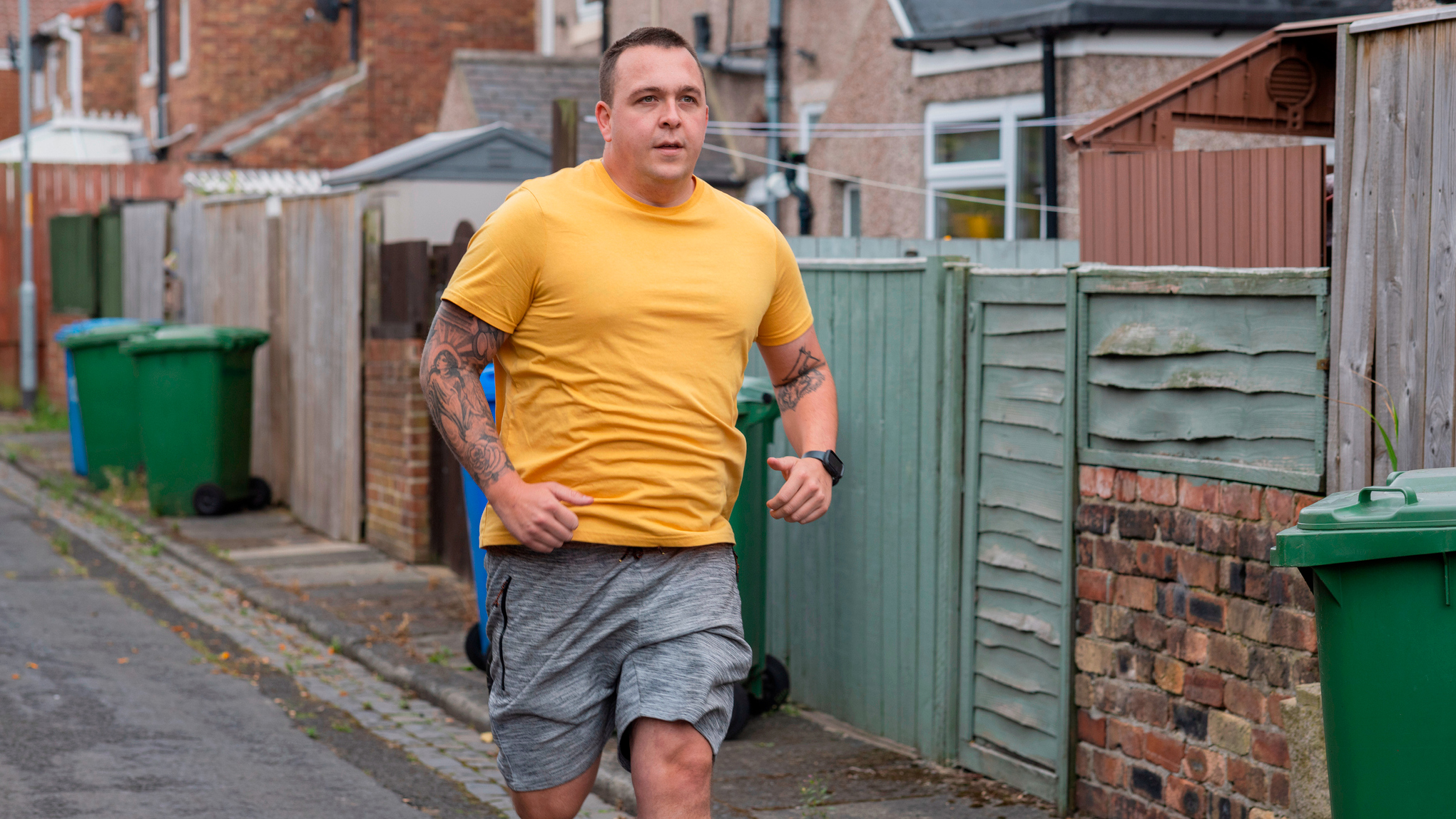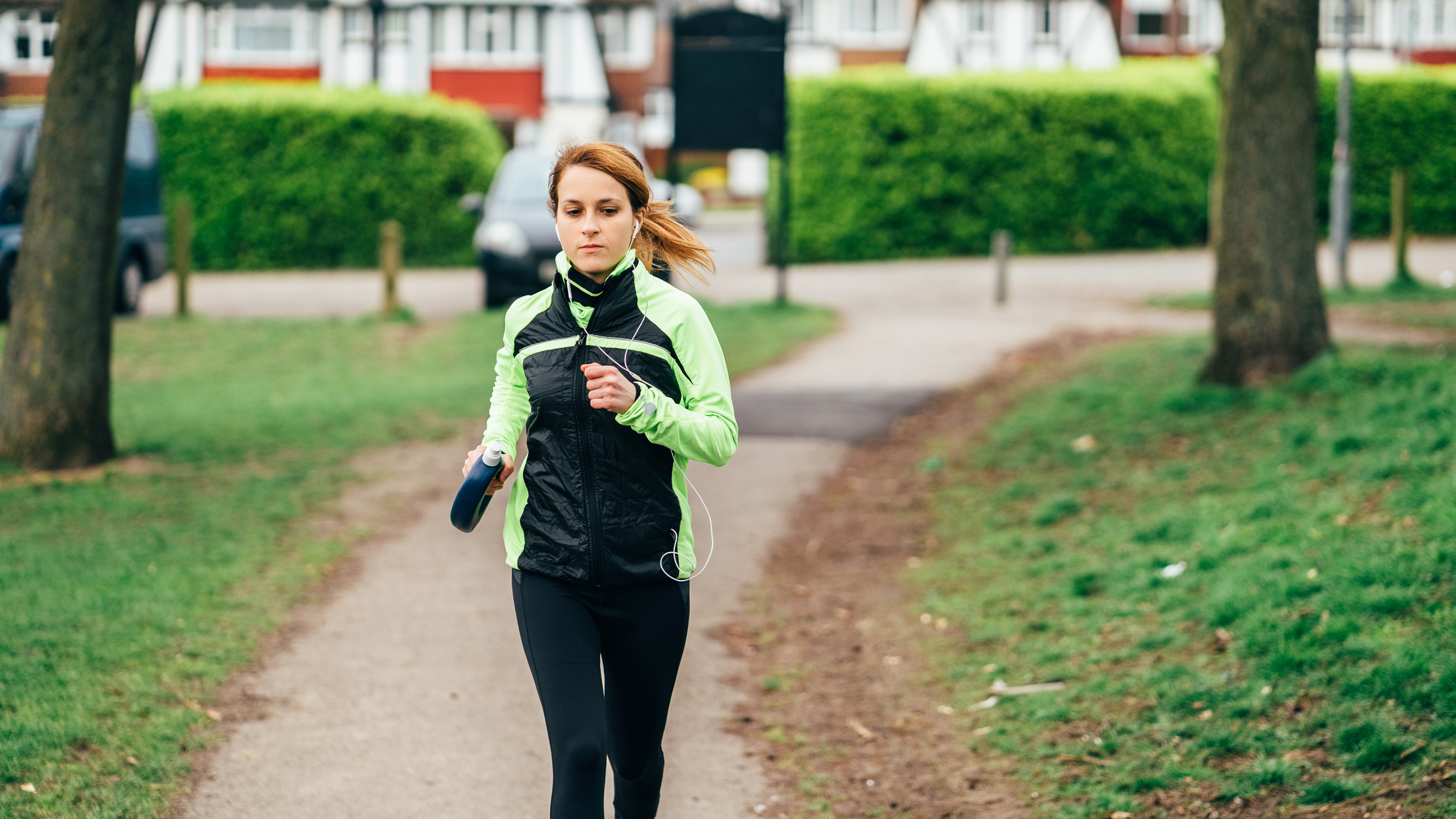What Are Easy Runs And Why Are They Important?
Your easy runs are the foundation of your training, so it’s important to be smart about them

Runners are notoriously bad at doing easy runs properly, which is surprising given that you’d think that slowing down for a run should be simpler than speeding up. Get your easy runs right and they help you get fitter while recovering between your tough runs. Of all the types of run you can do, easy runs are the ones you should be doing most often.
For more information on the benefits of easy runs and how to judge them, we spoke to Ben Parker, co-founder and head coach at running app Runna.

Ben Parker is the co-founder and head coach at running app Runna. Ben has spent over six years as a professional running coach, and is a certified England Athletics coach, Ironman coach, personal trainer and Pilates instructor. In his spare time, Ben is a keen athlete himself, has a marathon PB of 2hr 34min and competes within his age group at Ironman events and recently qualified for the Ironman 70.3 World Championships.
What is an easy run?
I’d always define an easy run as a run where you can hold a conversation. It’s very much easier than any of your intense training sessions. It’s a way to build your fitness without putting nearly as much strain on your body.
What pace should easy runs be?
The pace would normally be around a minute slower per kilometer than what you would run for a 5K race, or slower [around 1min 40sec slower per mile]. As a coach, I would always say that there’s no minimum speed. If you’ve got a friend who is way slower than you, that’s a really good way to do your easy runs, to keep yourself going slowly. But for most pace abilities, it’s at least a minute slower than your 5K pace—never faster than that.
So a 20-minute 5K runner should never run an easy run faster than five minutes per kilometer. A 30-minute 5K runner should never be running faster than a seven-minute kilometer for their easy runs.
That pace is if you’re doing a flat run on tarmac. If you’re running up and down hills and doing twists and turns, you’re going to be slowing that down more. For a lot of people, if they’re on an easy run and they encounter a really steep hill, they should walk. Running up hills is not necessarily easy.
What should your heart rate be for easy runs?
For those who want to use their heart rate as an indication for their easy runs, they need to think about what their max heart rate is. An easy run would be lower than 70% of the max heart rate. Heart rate is an interesting one, because people’s heart rates fluctuate so much. Some just have a faster heart rate. Ultimately, easy runs should just feel a lot nicer than when you’re pushing your intervals.
Will easy runs make you fitter?
Your hardest sessions are going to be the most important ones to make you fitter. But if you’re going into those sessions fatigued, you can’t get the most out of them. Instead, what we want to do is use easy runs as a way to build some endurance, to get some benefits, without creating so much fatigue that when you come into a session when you will challenge yourself, you can’t give it your all.
If you gave all of your sessions your all, you would be putting way too much load on the body, and then the risk of injury would be very high. Then over a longer period of time, you’re not going to keep getting fitter, because you’ll spend time injured.
So an easy run probably won’t make you as much fitter as if you went and nailed some intervals. But if you take the long view, it’s very much the best thing you can do for your fitness.
How long should easy runs be?
Just like every single one of your sessions, the distances, speeds and structure should depend on what you’re training for and how fit you are at the moment. With that in mind, for some people an easy run might be three or four kilometers [two to 2½ miles]. Others might do 15km [nine-mile] easy runs. If you’re training for a marathon, your long runs can be done at an easy intensity as well, if you’re not focused on introducing any speed to those sessions.
Should you be tired after easy runs?
Running at all is going to be harder work than not running. With that in mind, it’s going to use up more of your energy and as a result, you probably will feel more tired than you did before you set off. But doing a bit of a run will energize some people—it’s going to make some people feel fresher and release all those endorphins.
But simply put, easy runs do cost us some energy. If we’re in the core block of training for a marathon and we’ve got to do another easy run when we’re already a little fatigued, that’s going to be tiring.
Should you fuel for easy runs?
Fundamentally, physically going out and doing a run is going to cost you some energy. You should be making sure you’ve got adequate amounts of carbs to do any kind of form of exercise. You also still need to recover from the physical load of an easy run, even if that physical load is going to be much less than on your longest runs and interval sessions. Maybe the protein demands and the hydration demands are marginally less. The way to think about it is it’s just a small fraction of the load of any of our other runs, so we probably need a small fraction of the fuel, but we still need to fuel for them.

How many easy runs should you do a week?
Again, it does depend on someone’s fitness level and what they’re training for. For a normal person, training for any goal, you would probably want to get a long run in, a speed run and then probably two easy runs as well.
We normally say that around 80% of training should be done easy, and 20% of running should be done hard. We want to be doing most of our running easy, but within every single one of our speed sessions, we’re going to be doing some easy running. We’re going to be warming up, we’re going to be cooling down, we’re going to do a lot of easy running within our longer runs as well, some within our tempo runs too. All of that contributes to the 80% of our week that should be done at an easy pace.
Different people also will have different focuses. Someone might be working on their 5K coming from marathon training, and as a result their speed might be more important to them than building up their easy mileage. Whereas a true beginner who’s never run more than a 5K and is now training towards their first marathon might not be so bothered about smashing interval sessions and taking the injury risks that come with them, so they might put more weight on those easy miles.
It very much depends on the individual, but fundamentally around 80% of your running should be done at that easy level of intensity.
Do easy runs burn fat?
The lower our heart rate, the higher proportion of fat to carbs we’ll use. If we’re working at maximum intensity, we’ll use more carbs relative to fat because it’s a more efficient energy source. However, just by using any form of energy, we will burn fat. The best way to think about it is the more that we do, the more energy we’re going to use and therefore the more fat we will utilize.
From a day-to-day perspective of calories in versus calories out, to maintain your weight you want to make sure you’re hitting an energy balance, and to lose weight you want an energy deficit. And obviously the opposite if you’re trying to gain weight. Therefore if you’re going out and doing an easy run and maybe burning 400 or 500 calories, if you don’t eat that calorific load to counterbalance it over time, that will add up, meaning that you will lose weight.
You will be using carbs and burning some fat, and the ratio does change depending on the intensity that you’re running. The lower the level of intensity, the higher the proportion of fat burning, and an easy run is the lowest intensity of running, so proportionately you will burn more fat. But as an absolute volume, you may well burn more fat by running a bit faster, simply because the total amount of energy used is greater.
Can you swap easy runs for cross-training?
When you’re training for running, you want to be spending a portion of time in certain heart rate zones, putting strain on your muscles, and a lot of that can be replicated with other other sports like cycling and swimming and using an elliptical machine. They are very productive forms of exercise to benefit your running.
However, running is the only one of those four activities where we absorb impact. If you were to substitute all of your runs for cycling and using the elliptical, you would get a strong cardiovascular system, and you’d work similar muscles to those used in running. However, you wouldn’t get good at absorbing the impact, strengthening the tendons and the ligaments.
As a result you need to make sure that you’re gradually building up that intensity, in terms of the impact, with your running. But when it comes to feeling a little bit of an ache and pain here or there, or maybe we don’t want to go outside in the rain, using the cross-trainer or the indoor bike is a really good alternative.
Typically, cycling is easier. You get to sit down and you don’t have that impact. So normally I’d suggest extending your workout time by 50% or more if you’re going to substitute a run for a cycle. If you’re going on the elliptical, it’s a similar movement to running, but we may well want to extend that workout slightly again because we’re not getting the benefit of the impact that comes with running.
However, often the reason for substituting running for cross-training is because you may have some form of an injury. If that’s the case, you probably shouldn’t be extending that workout to counterbalance that load, and instead you should work within the level your body can manage without creating any pain or issue. When you’re injured, the most important thing is overcoming the injury and not worrying too much about any lost fitness because that might set your recovery back.
Sign up for workout ideas, training advice, reviews of the latest gear and more.

Nick Harris-Fry is a journalist who has been covering health and fitness since 2015. Nick is an avid runner, covering 70-110km a week, which gives him ample opportunity to test a wide range of running shoes and running gear. He is also the chief tester for fitness trackers and running watches, treadmills and exercise bikes, and workout headphones.
